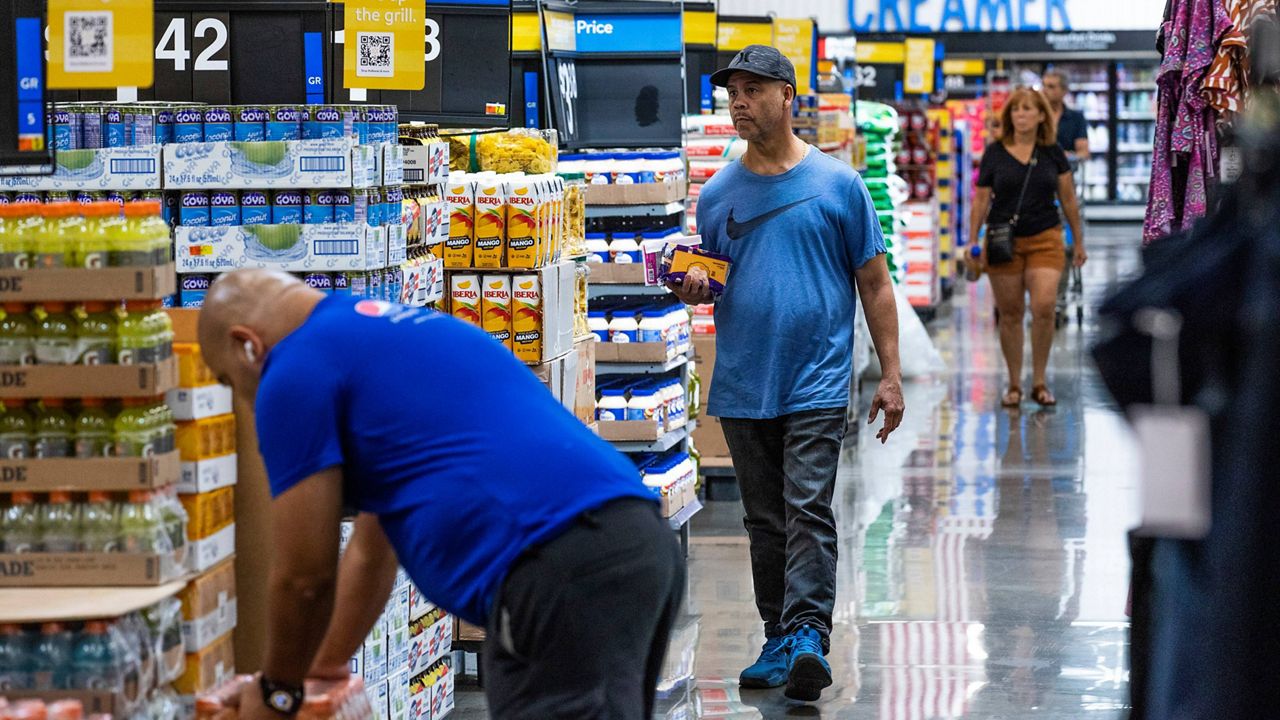As a presidential race profoundly shaped by Americans' frustration with high prices nears its end, the government said Thursday that an inflation gauge closely watched by the Federal Reserve has dropped to near pre-pandemic levels.
The Commerce Department reported that prices rose just 2.1% in September from 12 months earlier, down from a 2.3% year-over-year rise in August. That is barely above the Fed's 2% inflation target and is in line with readings in 2018, well before prices began surging after the pandemic recession.
On a monthly basis, prices inched up 0.2% from August to September, up slightly from a 0.1% increase from July to August.
President Joe Biden, who has been dogged by persistent inflation throughout his term in the White House, hailed the news while vowing that there's more work that needs to be done to lower prices for Americans.
"Inflation has now fallen to 2.1%—nearly at its 2% target," Biden said in a statement Thursday. "While critics said we needed a recession to lower inflation, instead inflation has come down while our economy has grown more than 12% over the course of my Administration—the fastest rate of any presidential term in the 21st century. Incomes are up almost $4,000 after accounting for inflation, and gas prices are down to $3.13 per gallon and below $3 in 21 states."
"We have more to do," he continued. "We will keep fighting to lower costs by building millions of new homes, lowering health insurance premiums, and making child care more affordable. Congressional Republicans are fighting for tax breaks for billionaires and big corporations, while raising costs on families by nearly $4,000 a year with across-the-board tariffs that would cause inflation to skyrocket. They have a cost-raising agenda—we have a cost-cutting agenda."
Taken as a whole, the latest signs of a sustained cooling of inflation arrive five days before an election in which the economy is a central issue. Former President Donald Trump has largely blamed the Biden-Harris administration's energy policies and promised that inflation would " vanish completely " if he is elected. Vice President Kamala Harris has promised to ban price gouging for groceries and to reduce child care and health care costs.
Economists say Trump's policies would actually worsen inflation, mainly because of his plans to impose sweeping new tariffs and embark on mass deportations of migrants and other immigrants. Harris' proposals on price gouging, experts have said, would leave the inflation outlook virtually unchanged
Inflation peaked at 7.1% in June 2022 after the economy had accelerated out of the pandemic recession at a time of severe shortages of parts and labor, according to the gauge released Thursday, called the personal consumption expenditures price index. Inflation has steadily cooled over the past two years after supply chains recovered from the pandemic disruptions and the Fed jacked up its key interest rate to a four-decade high, depressing home sales and auto purchases.
The Fed tends to favor the inflation gauge that the government issued Thursday — the personal consumption expenditures price index — over the better-known consumer price index. The PCE index tries to account for changes in how people shop when inflation jumps. It can capture, for example, when consumers switch from pricier national brands to cheaper store brands.
In general, the PCE index tends to show a lower inflation rate than CPI. In part, that's because rents, which have been high, carry double the weight in the CPI that they do in the index released Friday.
Chair Jerome Powell signaled in late August that the Fed is increasingly confident that inflation is coming under control. And hiring weakened in July and August. Those trends led the Fed to cut its key rate by an outsize half-point last month. With inflation continuing to slow, the Fed is expected to further reduce its rate by a quarter-point in November and likely by another quarter-point in December.
The outlook for future rate cuts isn't quite clear, though. Hiring rebounded sharply in September, and the unemployment rate fell to a low 4.1%, evidence that the job market may be stronger than it had appeared last summer. Retail sales also rose at a healthy clip last month. And on Wednesday, the government estimated that the economy expanded at a 2.8% annual rate in the July-September quarter, a solid pace, fueled by strong consumer spending.
The upbeat economic data has sparked some speculation that the Fed might decide to skip a rate reduction in December or cut rates more slowly next year.
On Friday, the government will issue its last major economic data before the presidential election: the October jobs report. It is likely to provide a more muddled picture than usual of the labor market, because Hurricanes Helene and Milton are thought to have caused tens of thousands of workers to lose their jobs, at least temporarily.



